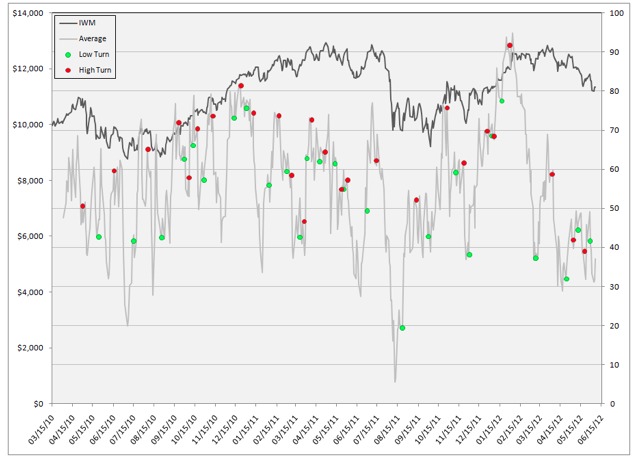Author: Clinch Capital
Covestor model: Select Equity
The correction over the past few months has reinforced the importance of having a hedging strategy in one’s investment approach. The difficulty comes into determining when to take a short position and how much short exposure to accumulate.
In addition to developing rules-based trading models at AlphaLab Capital, we also build proprietary indicators that help us determine downside potential of the overall market. For our Select Equity model, we use two independent quantitative methods to determine when to take a short position in the market.
The two indicators we use are called the Volatility Oscillator (VO) and Momentum Indicator (MI). The VO measures extreme overbought or oversold conditions and the MI measures the short-term trend of the overall market. When one of these indicators signals for a potential downside move in the market, we take a 50% short position in the Russell 2000 ETF (IWM).
When both indicators are triggered simultaneously, we take a 100% short position in IWM. These short positions are typically bought on margin, since the model will always have a certain amount of long exposure.
Below is a graph showing historical data for the MI since April of 2010. For this indicator, we take a short position in IWM at every ‘High Turn’ data point and cover the short position when the model signals a new ‘Low Turn’ data point. We use a similar methodology for the VO indicator.
These two indicators have proven to be successful at consistently predicting market selloffs. Since April of 2010, the IWM ETF has gained approximately 8.5%. Over that same time, VO would have produced a theoretical net gain of 51.2% and MI would have produced a theoretical net gain of 46.1% by shorting IWM. Since the market peaked at the end of the first quarter, these indicators guided us into an IWM short position on June 5.
We will continue to use both of these indicators when trading the Select Equity model and expect them to contribute to our future success.





